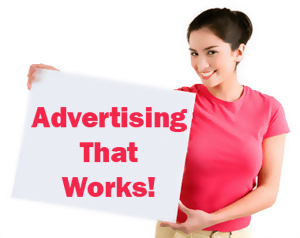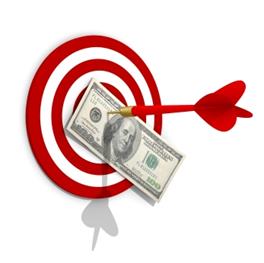II. Fill the gaps with the words from the previous exercise
a. To … your sales turnover you can place your ads on television or on the Internet.
b. Advertising helps to … the attention of … buyers.
c. … advertising should be placed on the most popular websites.
d. Ad … are the best way advertising on the radio.
e. … can be self made by including all the detailed information of your products.
III. Answer the following questions. Explain your answers.
a. What kind of advertising is the most effective? Why?
b. What is he best way of advertising on the radio?
c. What are the advantages of television advertising?
d. How to make internet advertising more successful?
e. What are the advantages of using banners, hoardings and pamphlets?
IV. Complete the chart with the information from the text and your own ideas.
| Advantages | Disadvantages | |
| Newspaper Advertising | ||
| Radio Advertising | ||
| Television Advertising | ||
| Banners, Hoardings and Pamphlets |
VI. Make a summary of the text.
VII. Did you know…? A 30- second TV advert during the American Superbowl costs more than $2 million!
Lexical Exercises
I. Decide with your partner if the following statements are true or false.
1. In the UK an advertisement is often called a ‘spot’.
2. There are no advertisements on BBC TV and radio.
3. There are three recognised abbreviations of
‘advertisement’: ‘advert’, ‘ad’ and ‘adv’.
4. A ‘commercial’ is an alternative word for an advertisement on television or radio.
II. Underline the stressed syllable in the following words.
ad ver tise ad ver ti sing
ad vert ad ver tised
ad ver tise ment
III. Fill the gaps below with the words from II.
1. Do you think that............................ is a form of art? Why (not)?
2. How much does it cost to ..........................in a newspaper, on the radio or on TV in your country?
3. Tobacco ......................... in the UK is banned on television and radio and in magazines
and newspapers. Is it banned in your country? Do you think it should be? Why (not)?
4. Do you think that tobacco, cigarettes etc. should be ............................ near schools?
5. What are the funniest three ......................... you have ever seen?
6. What factors do you think make a good .............................?
IV. Ask your partner the questions in III.
Lesson 2.Advertising Techniques
Warm Up
I. Discuss the following questions with your partner.
1. What is your favourite advert at the moment? Why do you like it so much?
2. Have you ever bought anything just because you saw it advertised on TV?
 3. What famous advertising slogans can you remember? Why are they so memorable?
3. What famous advertising slogans can you remember? Why are they so memorable?
4. What is the aim of most adverts these days – to persuade you to buy the product, to inform you about a new product or to remind you about a well-known product? Give examples.
5. Do you think there are too many advertisements on TV? How many do you think there should be?
6. Which adverts annoy you the most and why?
7. What influences you the most when you are shopping: the price of a product, its appearance or the advertising promoting it?
8. How much do you think children are influenced by adverts they see on television?
II. Debate the following statement.
Having a good product is not as important as having an eye-catching logo and a memorable slogan or catchy jingle.
Reading
Effective Advertising Techniques
Advertising techniques can be of many kinds. All creative advertisers use some of the following effective advertising techniques and tricks to grab the potential consumer's attention and turn it to sales.
Arouse Curiosity
Nothing works better than this technique. Humans, by nature are always drawn towards the unknown, or in this case something new and advanced. Arousing curiosity with words, prints, images or visuals will definitely make an impact. On an average, an individual spends less than 5 seconds to go through an entire ad. If your subject does not arouse curiosity immediately, it is a lost opportunity. A well-crafted ad should be eye-catching, and difficult to ignore.
 Promise a Benefit
Promise a Benefit
Most brands are associated with some pre-defined character, and they need to be re-emphasized with every new service advertised. The headline must promise a benefit for the consumer, because in most instances it is the headline that sells the product more than the copy, images or the celebrity.
Emotional Appeal
Many advertisers attract attention by pulling at the heart strings and triggering emotions. An emotional response is by far the most powerful reason for making decisions. We get more attracted to products and services that make us feel good and safe. The concept of emotional appeal are best seen in insurance ads made world over.
Children
In most houses, children have a say in every big or small purchase made. Out of ten commercials one sees through any medium, 8 have children featured in them who are generally a little more perfect than the target audience.
Celebrities
Advertisers use celebrity status and image to convince consumers that their products are worth purchasing. Besides celebrities that have international and national fame and recognition, many local advertisements use local, but popular celebrities in their ads.
Consumer Intelligence
As a rule, never underestimate or insult the consumer's intelligence. Most ads exaggerate, however, the benefits and basic information of the product and service should be well presented. A consumer who is interested will always check the market before making a decision. No one really believes in words like the greatest, unbelievable or once-in-a-lifetime-fantastic offer.
From www.buzzle.com
Reading comprehension
